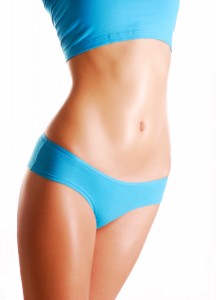Silicone implants have been employed for a while now in plastic surgery such as breast augmentation and buttock enhancement. Currently, fat grafting in lieu of implants is slowly taking the center stage. Fat transfer is nothing new in cosmetic surgery though. It has long been used in filling in hollowed cheeks and pitted scars. At our practice, fat grafting is now in demand for breast augmentation and buttock enhancement too.
What is fat grafting?
In a nutshell, fat grafting refers to using your own fat in one part of the body to augment or improve the appearance of other areas in the body. The harvested fat is consequently spun, filtered and purified through a centrifuge.
Who is the ideal candidate of fat grafting?
Like all types of surgery, anyone considering fat grafting should be physically healthy and free from health issues that could possibly hinder healing or increase the patient’s risk for post-surgical complications such as pneumonia and infection. In addition, there should be sufficient amounts of fat to successfully augment a body part.
Quitting smoking weeks prior to surgery is also advised because cigarette smoke can significantly slow down healing. Lastly, having realistic expectations of the procedure is a must.
Which cosmetic procedures employ fat grafting?
Fat injections may be used in the following cosmetic procedures/ treatments:
- Facial fat transfer – Fat fillers can fill in laugh lines and hollowed tear troughs. Acne scars can benefit from fat transfer too.
- Breast enhancement – Women can choose to improve the size and shape of their breasts via fat injections alone or decide to combine fat transfer with breast implants. In some cases, fat is also used in breast reconstruction after lumpectomy (removal of a portion of the breast) or mastectomy (removal of the entire breast).
- Buttock augmentation – This procedure is also known as the Brazilian butt lift and has soared in popularity for the past year or so among women who desire bigger, fuller, and firmer buttocks.
- Hand rejuvenation – Hands with prominent tendons and veins due to advancing age can also benefit from fat transfer.
For more information on the aforementioned fat grafting procedures, call 415.398.7778 to schedule an appointment with Dr. Mosser today!








